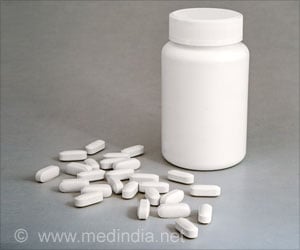Critical limb ischemia treatment shows no improvement in blood flow after three months of treatment. The drug on trial JVS-100 does not appear to aid wound healing after procedure to open blocked arteries in the leg.

‘According to this study, the drug on trial for critical limb ischemia, when used for treating patients with foot ulcers or gangrene neither improve blood flow nor result in faster healing of wounds.’





The only available treatment for the condition is revascularization, a procedure to restore blood flow by either inflating a balloon to open a blocked artery or by grafting a new blood vessel to bypass the blocked one. While revascularization can help blood flow through the major arteries in the legs, it does not necessarily restore adequate blood flow to the smaller blood vessels closer to the skin surface, where lesions can fester. JVS-100 is an experimental drug designed to improve blood flow in those smaller blood vessels. JVS-100 is a biologic therapy that delivers DNA that encodes proteins involved in the production of blood vessels. Its developers had hoped it would stimulate the growth of vessels to provide more routes for blood to reach blood-starved tissue.
The study, which enrolled 109 patients at 25 centers in the U.S., assessed whether JVS-100 helped wounds heal when used in concert with revascularization. In the trial, only about a quarter of patients' wounds had healed completely three months after undergoing revascularization. That proportion was the same for patients who received the experimental drug and those who received a placebo.
"These results clearly highlight the need for identifying additional therapies, or perhaps combinations of therapies, that could help these patients," said Mehdi Shishehbor, DO, PhD, MPH, director of the cardiovascular interventional center at University Hospitals Harrington Heart and Vascular Institute and the study's lead author. "The fact that only about 25 percent of these patients had healed at three months, despite being in a very rigorous, highly monitored environment both from the standpoint of wound healing and re-vascularization, makes us even more motivated to continue to seek additional therapies."
Patients were randomly assigned to receive either JVS-100 or a placebo in a series of two injections, one within 12 days of their revascularization procedure and one three months later. Half of those receiving JVS-100 were given a higher dose of the experimental drug and half were given a lower dose. Neither the patients nor those administering the injections knew which patients received the drug and which received the placebo.
Advertisement
The researchers tracked wound healing as well as rates of death, amputation and major adverse limb events (MALE), a combined endpoint that includes major amputation, bypass or balloon revascularization in the affected limb. In addition to low rates of wound healing, the researchers found high rates of adverse events in both groups. Three months after the initial injection, 15 percent of patients in the placebo group and 20 percent of patients in the treatment group had undergone amputation. The overall MALE rate was 9 percent in the placebo group and 14 percent in the treatment group. Additionally, 21 percent of those in the placebo group and 30 percent of those in the treatment group saw their wounds grow by 25 percent or more during the three-month follow-up. Differences in the rates of these outcomes were not statistically significant between groups.
Advertisement
The researchers will continue to track patient outcomes for at least 12 months.
"We are very much looking forward to the six-month data," Shishehbor said. "Based on those results, we will determine whether we will investigate this biologic therapy in a longer study, or perhaps consider studying a combination therapy that involves more than one biologic therapy."
Source-Eurekalert














